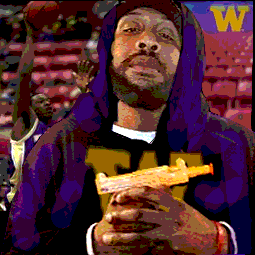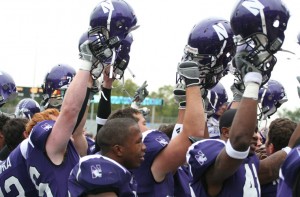
“The Big Ten conference announced Wednesday that all of its institutions will grant athletic scholarships for the entire term of an athlete’s enrollment, and allow some athletes who leave school to return and finish their degrees on scholarship.”
Here is a link to Adam Rittenberg’s article: http://espn.go.com/college-sports/story/_/id/11666316/big-ten-guarantees-four-year-scholarships-student-athletes
Currently every major D-1 conference with the new exception of the Big Ten offers 1-year renewable scholarships, which puts a player at risk of losing his/her scholarship at the end of each completed school year.
This can be for a number of reasons.
Although players do leave in order to pursue pro careers more often than not players lose their scholarships for disciplinary reasons that differ from school to school depending on the Head Coach’s philosophy, injuries, poor performance in their respective sport, and genuine player/coach disagreements in which the player still ends up being released from the program.
The Big Ten’s guaranteeing 4 year scholarships to both current and former student athletes is a huge step in the right direction for college athletics.
Big Ten athletes have the Northwestern football team to thank as they were the ones who took a stand, initiating the discussion and ultimately causing the Big Ten to make this landmark decision.
There are issues that still need to be addressed.
“Scholarships will neither be reduced nor cancelled as long as a kid maintains good standing in school, within the athletic department, and in the community.”
Alright, “Maintain good standing in school.” That is pretty cut and dried, as long as a kid does not fall below a 2.0 he/she will have a guaranteed scholarship. Kids should be prepared and fully capable academically when they arrive. It’s on the part of parents, schools k-12, and prep/aau coaches to train kids to be Student-Athletes, and it’s on the part of college coaches to recruit the best STUDENT-Athletes they can find. Accountability on the part of the athlete also has to be present.
“Maintaining good standing within the athletic department, and in the community.”
Who determines whether or not a kid is maintains good standing within these two areas? Coaches? Coaches should provide input but should not have the final say as to whether or not kids are in good standing within the athletic department nor the community.
We have to understand above all else coaches get paid to win. So coaches ultimately care more about wins than anything.
Athletic performance should not be a determining factor when deciding whether or not a kid has good standing within the athletic department. If a player can potentially help the team win he will remain in good standing within the athletic department regardless of a kids actions good or bad if up to most coaches.
Fellow student-athletes should be able to give input on the part of a teammate whose status of good standing is being questioned, as well as academic counselors, and trainers.
Who determines if a kid has good standing in the community? If community representatives work for, or in partnership with the athletic department, they do not represent the community. They can not work for the athletic department. Representatives that work for the school approach issues that come up between coaches and players from a very biased perspective, usually in favor of the coach.
As far as reinstatement goes, I have to ask commissioner of the Big Ten, Jim Delany if there are any more “Bona Fide” reasons other than a kid leaving to pursue a pro career pro or family issues that may come up?
Does the University faculty have a say in determine whether or not a kid gets back into school?
If a kid is done athletically, the faculty and the university should have more influence on a decision for reinstatement to finish school than the athletic coach and athletic department.
It is not fair to former players that had genuine disagreements with coaches to have to ask the same coaches for reinstatement.
Why not set a conference-wide criteria that all schools have to follow?
Establish penalties for schools that fail to comply.
Each school should have a committee made up of members of the community, members of the athletic department, and most importantly, school faculty that determine good standing while kids are in school, as well as determine whether or not kids who leave early should be able to return to school. Using the criteria put in place by the Big Ten.
This would create a system of checks and balances therefore protecting current and former student-athlete’ rights.

